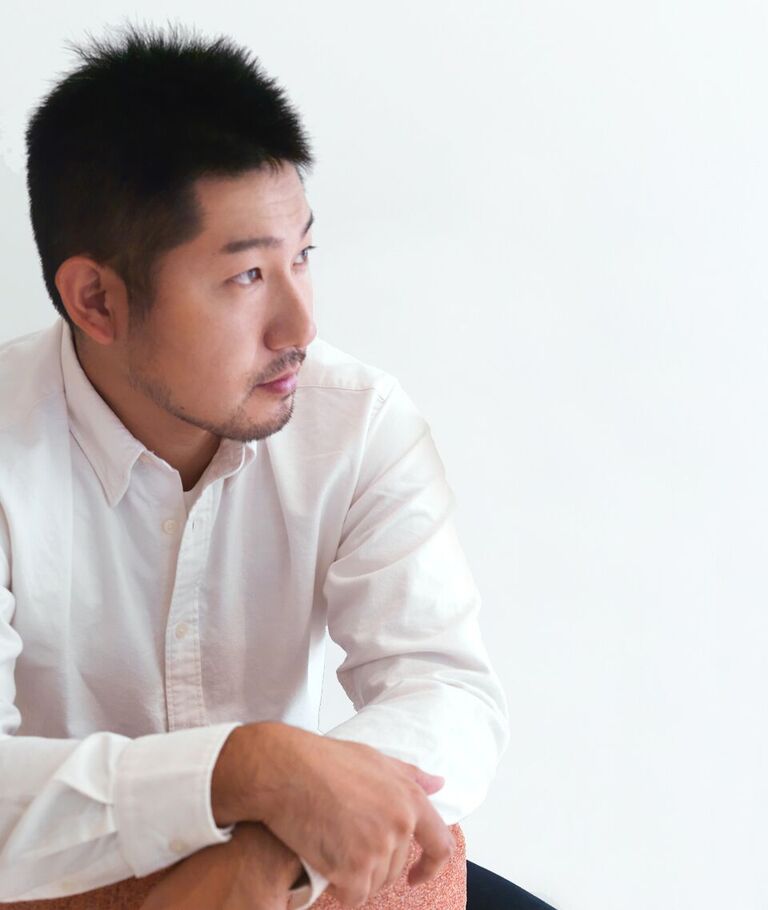Playgrounds don’t always need to be furnished with items designed for children. Mikiya Kobayashi held an exhibition, Playscape, in his Tokyo design shop to show that there’s an opportunity for furniture to interact with everyone and create a poetic landscape. The exhibition showcases various park-like furnitures such as a swing, seesaw, rocking chair, mountain and cradle.
Each piece is made from Japanese hardwood and covered with Kvadrat textiles in shades of black and white, orange and blue.
Mikiya Kobayashi was born in Tokyo in 1981 and graduated from Mushashino Art University in 2005. In 2006, after working at Field Four Design Office in Japan, he started his own studio, “Mikiya Kobayashi Design.”
Kobayashi first opened his design store in 2006 and named it “Taiyou no Shita” but changed the name to “Increments” this Summer to commemorate the move. The Playscapes exhibition was held to mark the rebrand.
Koyabashi is a recognized name in the field. In 2017, he won the IF Product Design Award (Germany); in 2015, the Good Design Award (Japan), and in 2013, he was the winner of Elle Decor’s Japanese Design Talent.
In conjunction with the opening of Playscape, Design Milk caught up with Kobayashi to talk about Japanese furniture design.
I know you collaborate with other studios and designers frequently; is there one collaboration that you particularly enjoyed?
It’s difficult to just mention one company, because I am always getting new and great experiences from all collaborations.
But I can say HARU which is one of Karimoku’s brands was the most important opportunity for me in terms of designing furniture. When I met Karimoku, I didn’t have any experience in designing chairs. I learned important standards for furniture design from them. The reason they are able to make good seating is because they measure blood pressures, heart rates and so on, and take that into account. It was great experience for my work.
Can you tell if something is made by a Japanese designer? If so, how do you tell? What is unique about Japanese furniture?
I don’t want to immediately say “Simple” or “Minimal”…. It’s difficult to tell you the originality of Japanese design, where it comes from. If I were to talk about myself, I think my important thing for my design is to find good balance anytime. For me it is the balance of space and people, people and people, objects, people and people.
What was your inspiration behind the donut stool?
You can take this stool easily by grabbing the form of the donut. For a stool, the most important thing is to be able to take it easily and bring it anywhere (House, office, outdoors, so on).
As for the shape of the stool, I designed it in line with the balances I mentioned earlier.
What do you enjoy about being a furniture designer?
I am always so happy when I come into a space and I see that the space has my furniture, and people are using my furniture.
This is especially so when I see that the space has not only my furniture, but also other designer objects. That is so great to me. Because to make good harmony with the furniture from other design philosophies is an important aspect for my design. It’s natural for one design to have to relate to the other.
How does Japanese culture inform Japanese design?
I think form follows not only function but also mind.
And in terms of our mind, I think Japanese design is caused by respect for everything.
How does Tokyo influence you?
I like working in Tokyo because Japan has many manufacturing companies and they work with many different materials. This makes it easy for the furniture industry.
from WordPress https://connorrenwickblog.wordpress.com/2018/09/13/mikiya-kobayashi-on-making-harmony-with-space-through-furniture/










No comments:
Post a Comment